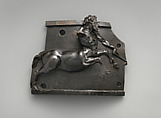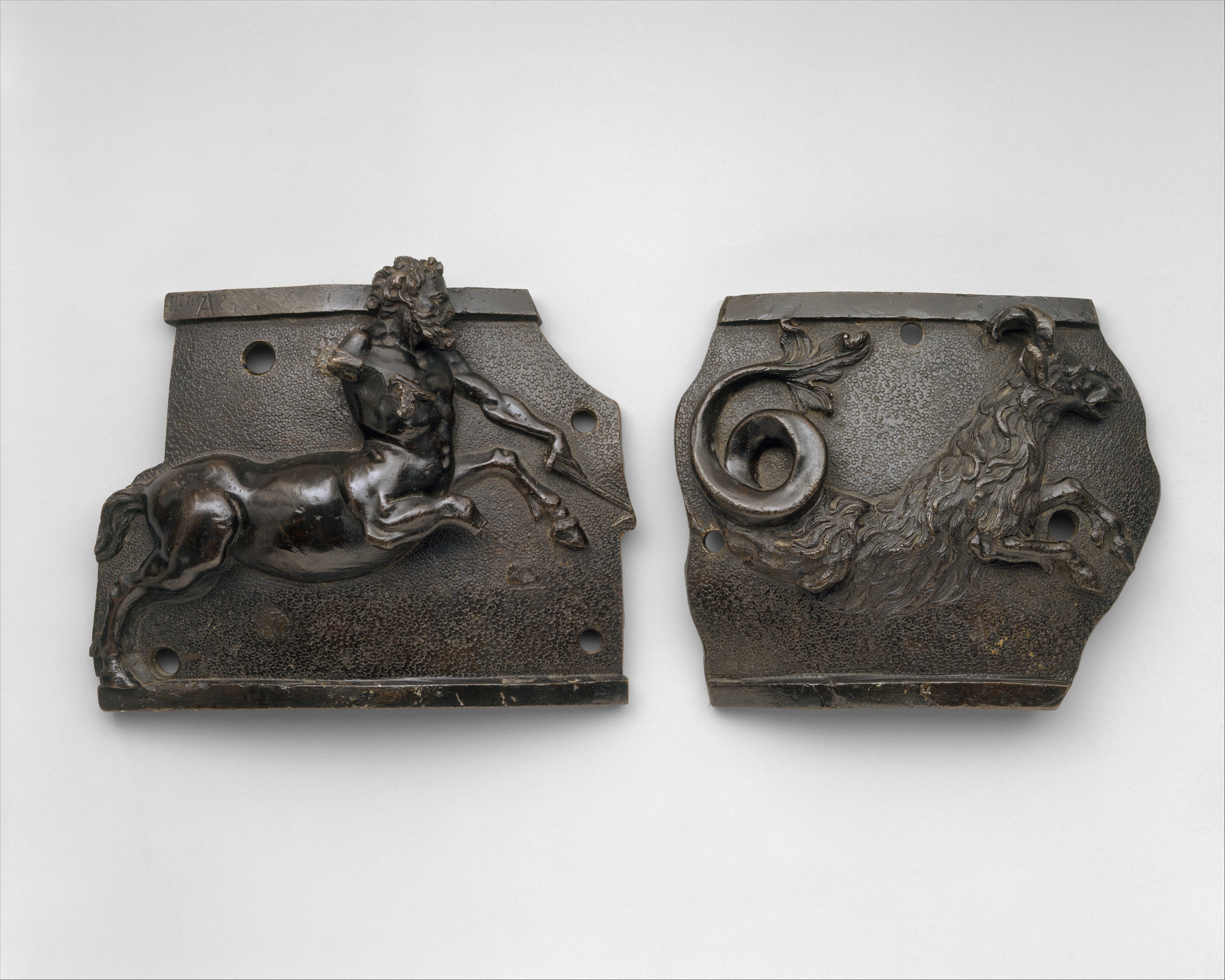Sagittarius (section of a zodiac frieze)
Typically Venetian are the punched grounds against which the forms dance on these frieze sections. More sinuously elegant than reliefs by leading Venetian bronze sculptors of the generation active about 1500–1520—Alessandro Leopardi, Vittore Gambello (known as Camelio), and the Master of the Barbarigo Reliefs—the present two (see also Capricorn, 2004.440.1) may date slightly later but are still informed by High Renaissance standards of expression and orga nization. The band to which they belonged was exceptionally large—on the basis of these two of the zodiac's twelve signs, the original ring has been projected at thirty-two to thirty-eight inches in diameter. Its function can only be surmised. At Sagittarius's top left are faint remains of an inscription, which is mostly filed away. One can discern F. CITA0 (abbreviations formai and anno) and a space for numerals, of which the last may be a two. When first recorded in the mid-nineteenth century, in the fabled Fejérváry-Pulszky collection in Budapest, the fragments were said to be of ancient Roman origin. Working in support of that idea, someone did his best to destroy the inscription's contradictory evidence.
This image cannot be enlarged, viewed at full screen, or downloaded.
This artwork is meant to be viewed from right to left. Scroll left to view more.




